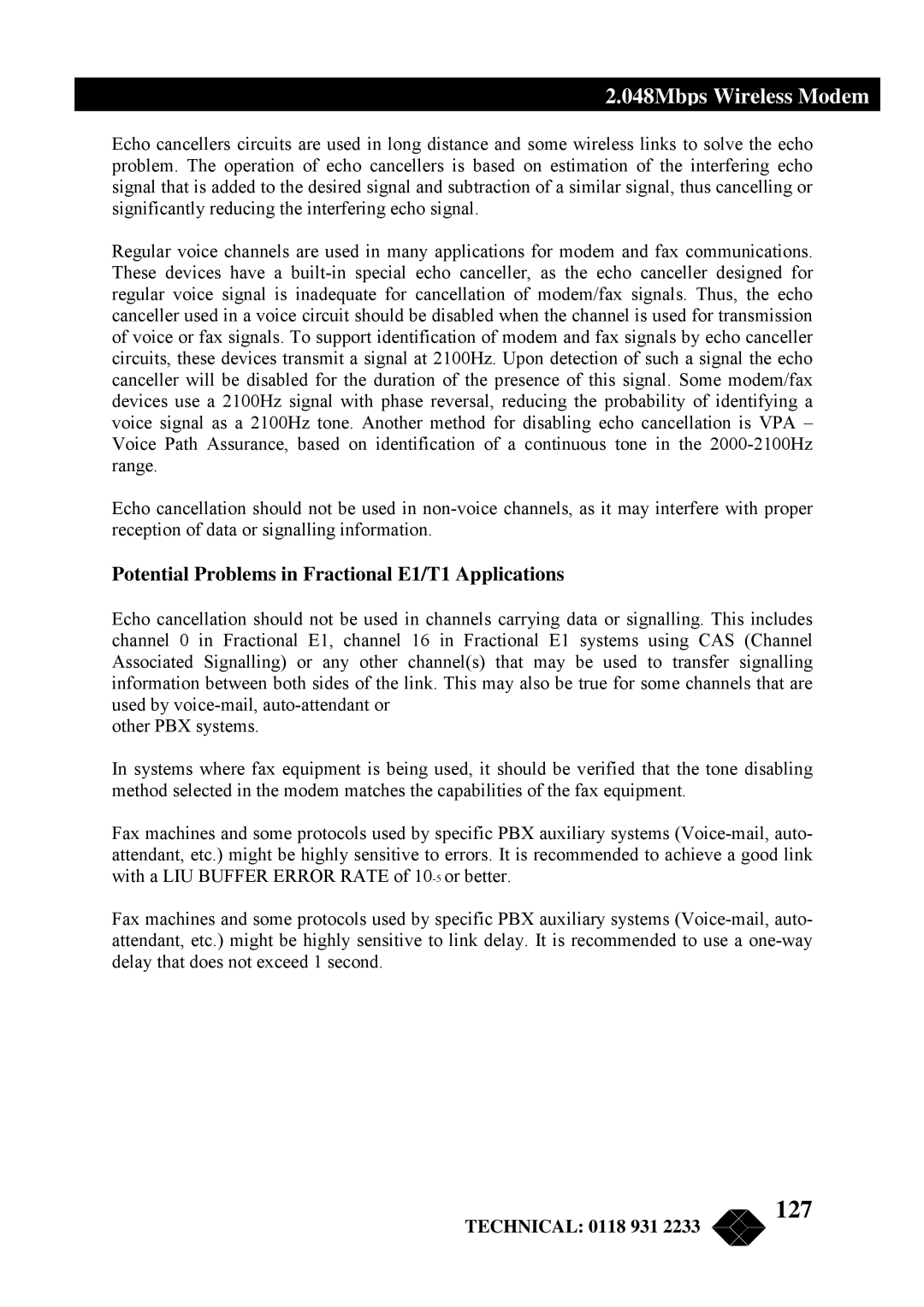
2.048Mbps Wireless Modem
Echo cancellers circuits are used in long distance and some wireless links to solve the echo problem. The operation of echo cancellers is based on estimation of the interfering echo signal that is added to the desired signal and subtraction of a similar signal, thus cancelling or significantly reducing the interfering echo signal.
Regular voice channels are used in many applications for modem and fax communications. These devices have a
Echo cancellation should not be used in
Potential Problems in Fractional E1/T1 Applications
Echo cancellation should not be used in channels carrying data or signalling. This includes channel 0 in Fractional E1, channel 16 in Fractional E1 systems using CAS (Channel Associated Signalling) or any other channel(s) that may be used to transfer signalling information between both sides of the link. This may also be true for some channels that are used by
other PBX systems.
In systems where fax equipment is being used, it should be verified that the tone disabling method selected in the modem matches the capabilities of the fax equipment.
Fax machines and some protocols used by specific PBX auxiliary systems
Fax machines and some protocols used by specific PBX auxiliary systems
TECHNICAL: 0118 931 2233
